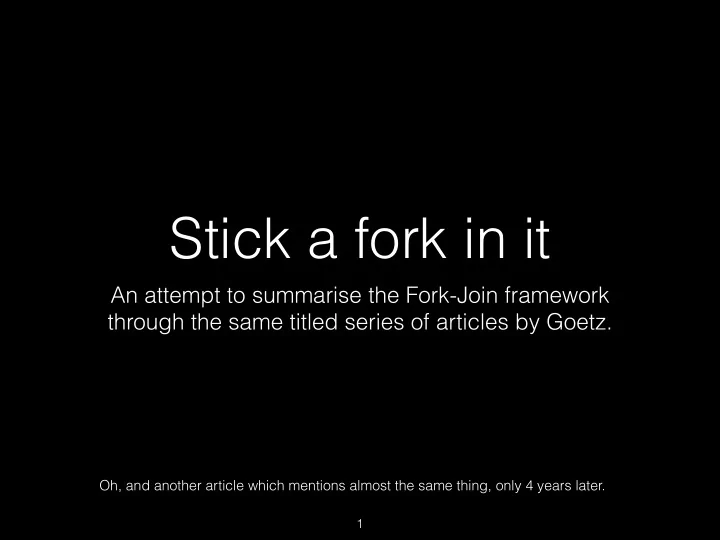

Stick a fork in it An attempt to summarise the Fork-Join framework through the same titled series of articles by Goetz. Oh, and another article which mentions almost the same thing, only 4 years later. � 1
Why another framework? • asynchrony vs. concurrency • finer-grained parallelism � 2
F-i-n-e-r-g-r-a-i-n-e-d P-a-r-a-l-l-e-l-i-s-m • Compute-intensive, • independent tasks • A shift in perf. metric: PU utilisation -> user perception � 3
Divide and conquer � 4
Fork and join nioj join fork fork nioj join nioj join fork fork fork fork � 5
Some classes • ForkJoinTask � RecursiveAction � • RecursiveTask<> � • compute() � • • ForkJoinPool � executor for ForkJoinTask • set of work thieves default constructor adjusts the #threads • according to the #PUs � 6
ParallelArray • a more declarative way (of defining operations on data sets) • similar to SQL queries • filtering, application, mapping, replacement, summarisation • transparent parallelisation Not included in Java 7. May be in 8 � 7
Summary • Fork-Join framework • ideal for divide and conquer • ParallelArray � • uses fork-join under the hood • relieves the programmer of parallelisation duties � 8
Exercise • Implement int BinarySearch(int[] sortedArr, int value) - returns the first occurrence • you can use Arrays.sort to sort an integer array filled with random integers • Experiment with the “sequential threshold”. How does it affect the performance? � 9
Double-click to ask a question • Double-click to discuss � 10
Recommend
More recommend